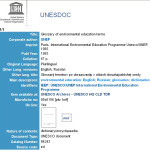Categoría: Education
Created by: zblagojevic
Número de Blosarios: 5
 English (EN)
English (EN) Macedonian (MK)
Macedonian (MK) Chinese, Simplified (ZS)
Chinese, Simplified (ZS) Indonesian (ID)
Indonesian (ID) Japanese (JA)
Japanese (JA) Russian (RU)
Russian (RU) French (FR)
French (FR) Romanian (RO)
Romanian (RO) Serbian (SR)
Serbian (SR) Hungarian (HU)
Hungarian (HU) Filipino (TL)
Filipino (TL) Norwegian Bokmål (NO)
Norwegian Bokmål (NO) Italian (IT)
Italian (IT) Bulgarian (BG)
Bulgarian (BG) Portuguese (PT)
Portuguese (PT) Spanish (ES)
Spanish (ES) Spanish, Latin American (XL)
Spanish, Latin American (XL) Greek (EL)
Greek (EL) Portuguese, Brazilian (PB)
Portuguese, Brazilian (PB) German (DE)
German (DE) Swedish (SV)
Swedish (SV)
 Estonian (ET)
Estonian (ET) Lithuanian (LT)
Lithuanian (LT) English, UK (UE)
English, UK (UE) Dutch (NL)
Dutch (NL) Finnish (FI)
Finnish (FI) Somali (SO)
Somali (SO) Arabic (AR)
Arabic (AR)
 Macedonian (MK)
Macedonian (MK) Chinese, Simplified (ZS)
Chinese, Simplified (ZS) Indonesian (ID)
Indonesian (ID) Japanese (JA)
Japanese (JA) Russian (RU)
Russian (RU) French (FR)
French (FR) Romanian (RO)
Romanian (RO) Serbian (SR)
Serbian (SR) Hungarian (HU)
Hungarian (HU) Filipino (TL)
Filipino (TL) Norwegian Bokmål (NO)
Norwegian Bokmål (NO) Italian (IT)
Italian (IT) Bulgarian (BG)
Bulgarian (BG) Portuguese (PT)
Portuguese (PT) Spanish (ES)
Spanish (ES) Spanish, Latin American (XL)
Spanish, Latin American (XL) Greek (EL)
Greek (EL) Portuguese, Brazilian (PB)
Portuguese, Brazilian (PB) German (DE)
German (DE) Swedish (SV)
Swedish (SV)
 Estonian (ET)
Estonian (ET) Lithuanian (LT)
Lithuanian (LT) English, UK (UE)
English, UK (UE) Dutch (NL)
Dutch (NL) Finnish (FI)
Finnish (FI) Somali (SO)
Somali (SO) Arabic (AR)
Arabic (AR)
A small geographical unit occupied by a community of plants and/or animals and characterized by a high degree of uniformity in its main climatic, soil and biotic conditions (e.g., a sandy desert).
The maximum ability of plants and animals to increase in number when conditions are optimum.
All living organisms, both plant and animal, that exist within a given area or period.
Protected land, water, and/or costal environments that, together, constitute a world-wide network of scientific information and include significant examples of natural biomes and/or unique, ...
The portion of the earth and its atmosphere capable of supporting life. The thin covering of the planet that contains and sustains life.
The complex of communities maintained by the climate of the region and characterized by a distinctive type of vegetation. A major biotic community composed of all plants and animals and smaller ...
The total weight (mass) of all living matter in a given unit of the environment at a given time.

